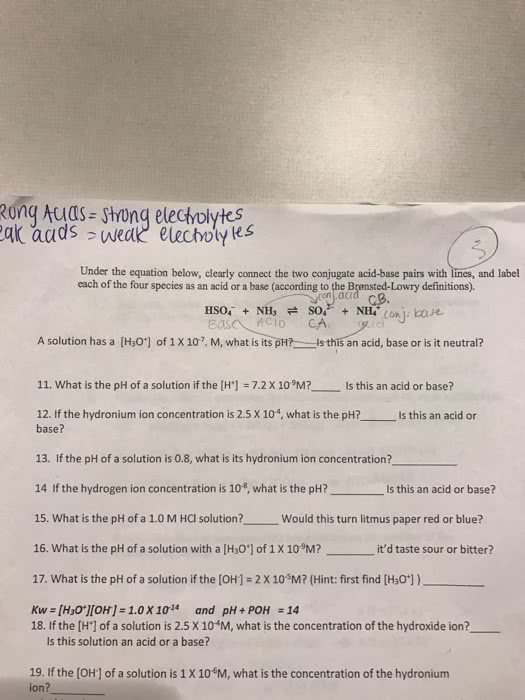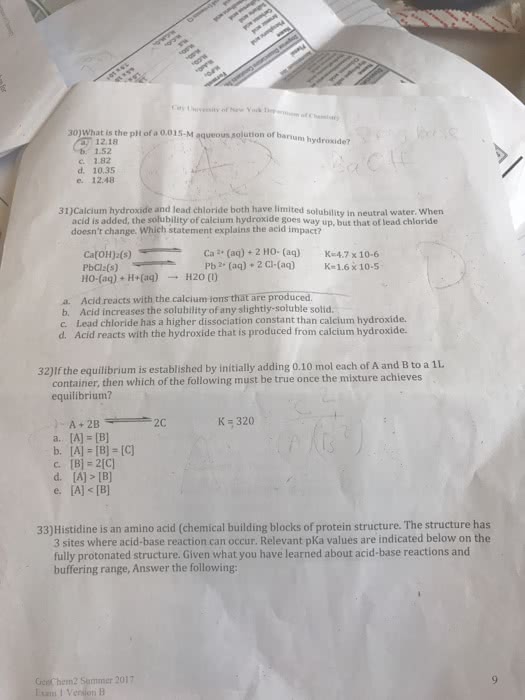CHM 2045 Chapter Notes - Chapter 4: Atomic Radius, Equilibrium Constant, Weak Base
Document Summary
Water is amphoteric, meaning that it may act as either an acid or a base. Neutral water naturally dissociates into hydronium and hydroxide i. c. Only a small fraction dissociates at 25 c, enough to generate 10^-7 m h3o and 10^-7m oh i. This means that neutral water has both a little hydronium and a little hydroxide d. e. A neutral aqueous solution is defined as one in which [h3o]=[oh], and therefor ph=poh. An acidic solution has more hydronium than hydroxide, and can turn blue litmus paper red. When an acid is mixed with water, it is said to dissociate. The acid dissociation constant, ka is nothing more than the equilibrium constant of an acid in water. A molecule of an acid when added to water, dissociates to form hydronium ion and its conjugate base (a-) i. d. As the relative strength of an acid increases, it"s ka increases and its pka decreases.




